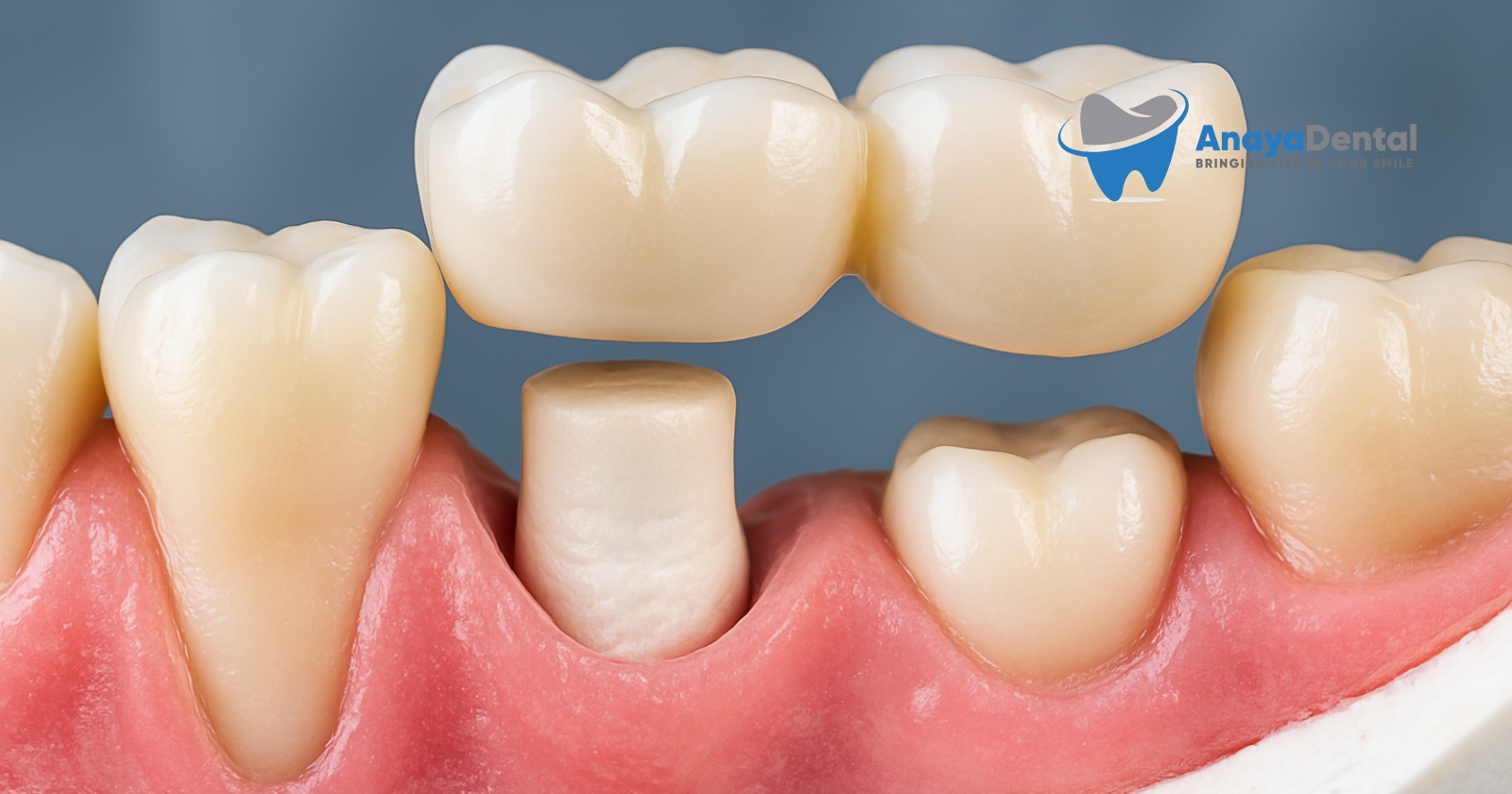The D2950 dental code (“Core Buildup, Including Any Pins When Required”) plays a vital role in restorative dentistry. This code addresses cases where significant tooth structure loss requires rebuilding the tooth’s coronal anatomy to support a crown or similar restoration. Despite its clinical importance, D2950 faces frequent claim denials due to coding inaccuracies and evolving insurance policies.
Let’s explore the guidelines, applications, and reimbursement challenges associated with this essential dental procedure.
What is a Core Buildup?
Definition and Purpose
A core buildup (D2950) involves placing restorative materials to reconstruct a tooth’s core structure when insufficient natural dentin remains to retain an extracoronal restoration, such as a crown or bridge. This procedure often includes pins or posts to enhance retention.
Try Our Dental Calculators
Unlike fillers or bases (coded under D2949), which address minor undercuts or irregularities, a core buildup under D2950 is strictly indicated for structural reinforcement.
The American Dental Association (ADA) introduced this code to standardize billing for foundational restorative work, emphasizing its necessity in cases of:
- Severe decay
- Fractures
- Post-endodontic weakness
When Should D2950 Be Used?
Clinical Indications
Dental professionals must meet specific criteria to justify D2950 usage:
- Extensive Tooth Structure Loss: At least 50% of the coronal structure must be missing due to caries, trauma, or prior restorative failures.
- Subgingival Preparation Margins: The remaining tooth structure often extends below the gingival crest, complicating crown retention without additional support.
- Insufficient Vertical Dentin: Less than 3 mm of sound dentin should remain above the preparation line to warrant a buildup.
For example, a molar with a fractured cusp and subgingival decay would require a core buildup to distribute occlusal forces evenly and prevent crown displacement.
When Not to Use D2950
The D2950 code is inappropriate for:
- Eliminating Undercuts: Minor irregularities should be addressed using D2949 (Restorative Foundation)
- Same-Day Root Canals: Insurers often consider the buildup integral to endodontic therapy
- Temporary or Interim Restorations: Materials placed for impression convenience or short-term use
Coding Guidelines: D2950 vs. D2949
Misclassification between D2950 and D2949 remains a leading cause of claim rejections. While both involve restorative materials, their purposes differ:
- D2950: Focuses on structural reinforcement for crown retention
- D2949: Addresses idealizing tooth morphology (e.g., blocking undercuts for impressions)
Documentation Requirements
To avoid denials, providers must submit:
- Preoperative Radiographs: Demonstrating extent of decay/fracture
- Narrative Justification: Detailing why the buildup was necessary for crown retention
- Crown Placement Date: Many insurers require proof that the crown was seated within a reasonable timeframe
Insurance Challenges and Solutions
Common Denial Reasons
- Bundling with Root Canals: Insurers like Delta Dental often deny D2950 if performed alongside endodontic therapy, citing procedural inclusivity.
- Lack of Crown Association: Some policies only reimburse buildups if a crown is subsequently placed, necessitating submission of both procedure dates.
- Insufficient Documentation: Over 60% of denials stem from absent narratives or radiographic evidence.
Payer-Specific Policies
- Delta Dental: Requires ≥50% structure loss and subgingival margins
- Medicaid: Often limits D2950 to posterior teeth with endodontic history
- Commercial Plans: Vary widely; UnitedHealthcare mandates preauthorization for molars
The Core Buildup Procedure
Clinical Protocol
- Tooth Preparation: Removal of caries, old restorations, and unsupported enamel. The preparation must expose sound dentin for adhesion.
- Pin/Post Placement: If retention is inadequate, stainless steel or fiber posts are cemented into the root canal space.
- Core Material Application: Composite resin or amalgam is layered to recreate the coronal anatomy.
- Crown Preparation: Final shaping for the indirect restoration.
Cost Considerations
Fees range from $200–$400 per tooth, influenced by:
- Geographic Location: Higher in urban centers
- Material Choice: Composite resins cost 20% more than amalgam but offer superior aesthetics
- Pins/Posts: Each additional post (D2953) adds $50–$75
Common Misconceptions and Compliance Risks
Overuse and Misapplication
Many practices erroneously bill D2950 for:
- Routine Crown Preps: Idealizing tooth form without structural need
- Bases/Liners: These are considered part of the restorative procedure
Legal Implications
Incorrect coding risks audits, fines, and accusations of fraud. For instance, a 2024 OIG report highlighted a clinic fined $250,000 for systematic D2950 upcoding.
Recent Updates (CDT 2024)
The ADA clarified that D2950 excludes:
- Primary Teeth: Use D2941 for interim therapeutic restorations
- Ridge Augmentation: Now coded under D7959
Organizations like the American Academy of Restorative Dentistry advocate for:
- Standardized Training Modules: Reducing coder variability
- AI-Powered Audits: Flagging mismatched codes and documentation in real time
Conclusion
The D2950 code is indispensable for restoring teeth with severe structural compromise, yet its complexity demands meticulous documentation and coding precision.
By adhering to clinical criteria, distinguishing it from D2949, and engaging insurers proactively, practices can mitigate denials and ensure patient access to necessary care. Future advancements in training and technology promise to streamline compliance, preserving the code’s role in sustainable, high-quality dentistry.


